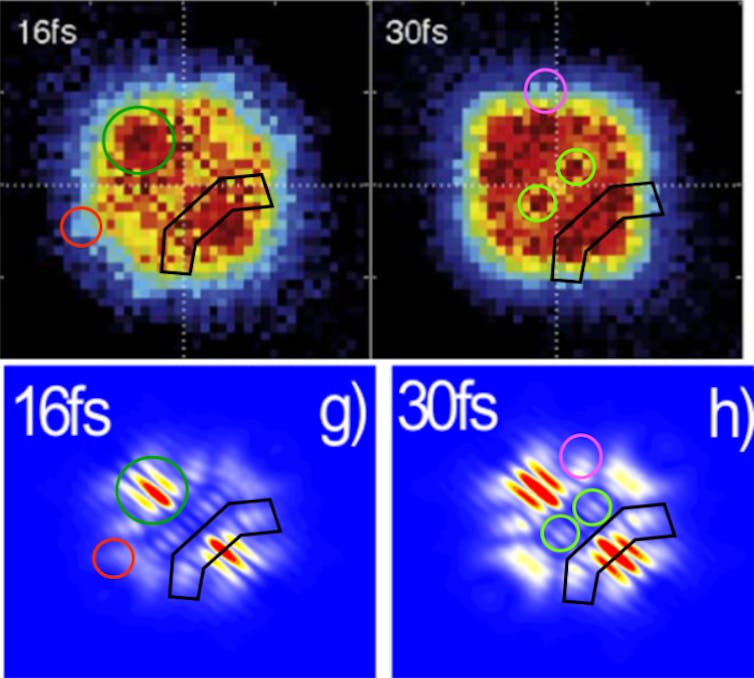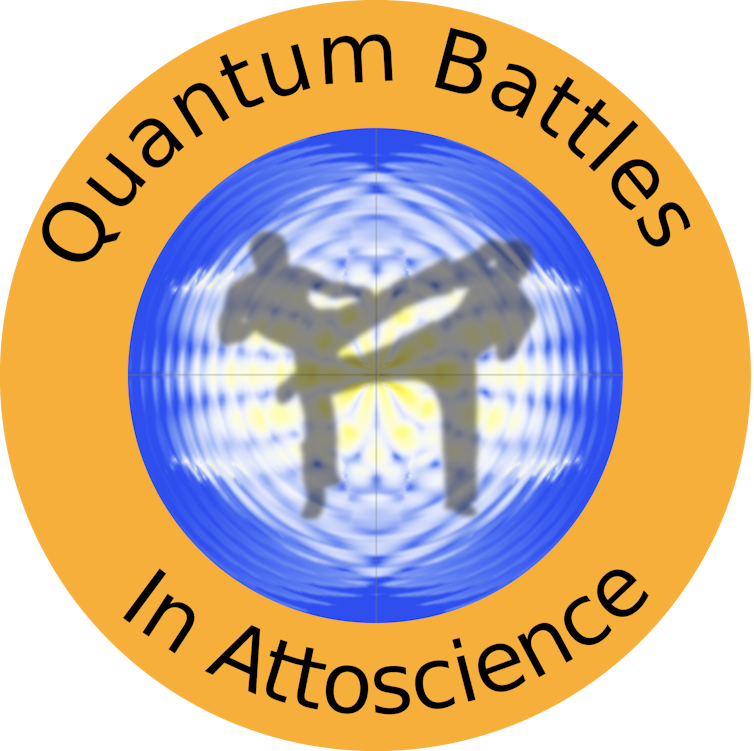Attosecond science, the laser-based study of what happens to matter over very short time scales, could lead to major advances in our understanding of the most rapid natural processes.
This could improve the problem-solving capabilities of computers, develop more efficient solar cells, and both identify new medical treatments and improve diagnostic processes – all critical areas of research as we seek solutions to climate change and innovative ways to fight disease.
An attosecond is equivalent to a billionth of a billionth of a second. Attosecond science – the subject of Nobel Prize in Physics 2023
– involves using incredibly short, intense pulses of laser light to transfer lots of energy to a “target” material. This causes the material to emit very fast-moving electronic particles as well as ultraviolet light and X-rays, allowing the movement of electrons to be observed in real time.
Physicists like me can then measure or predict how these electrons move, which normally cannot be done. And by shortening the attosecond pulses even further, we can get more information about the behavior of the electrons.
Electrons are extremely small particles – the building blocks of matter – that carry energy in atoms, biomolecules (which could serve as new drugs), nanostructures and metals. Controlling how electrons move and capturing this in images could completely reshape the way we perceive and interact with nature. Attosecond science has already spawned new research in areas such as attochemistry, attobiology And attomicroscopy.
Shorten the pulse
In recent years, laser pulses used in attosecond science have become shorter and laser fields more intense. The world record for the shortest light pulse is 43 attoseconds, set at Swiss university ETH Zurich in 2017.
This broke the record of 53 attoseconds fixed months earlier by researchers from University of Central Floridawho himself had broken the world record twice in the previous period five years.
These extremely short attosecond pulses also carry more energy, especially when generated using a free electron laserwhich can reach electrons deep inside the nuclei of atoms that were previously inaccessible.
Attosecond science allows scientists to explore the fundamentals of quantum physics under a wider range of conditions. A team in South Korea reported achieving laser intensities equivalent to “all the sunlight on the planet” and compressing it into an area. “the size of a red blood cell”.
This could pave the way for creating subatomic particles from a vacuum using only light, giving physicists a new way to study these particles, the building blocks of matter in our universe.
Over the past decade, attosecond science has also moved away from target materials being gases and small molecules has solid And organic molecules. But the strong electromagnetic fields generated by lasers can change the structure of targets, or even destroy them – which can therefore be a difficult process for scientists to achieve.
In materials such as organic photovoltaics (used in solar cells), which contain carbon-based substances including plastics, electrons interact with each other and their surroundings when exposed to attosecond pulses.
Studying this behavior could help scientists improve solar cell technology: tracking the first fractions of a second after light hits the cell. could allow the materials it contains must be modified, thereby improving performance.
Attosecond science could lead to a better understanding of photosynthesiswhere plants convert light energy into chemical energy to sustain life. This area could also play a key role in construction optoelectronic computerswho have switching speeds (a measure of their responsiveness) 100,000 times faster than existing digital electronic devices.
Fast switching speeds allow a device to perform more operations per second, which could enable faster computers.

According to AS Maxwell and C. Faria, Phys. Reverend Lett. 116, 143001 (2016)., Author provided (no reuse)
Quantum applications
Theoretical research into the possibility of combining attosecond science with quantum computing is in progress. In theory at least, marrying the two could enable extremely difficult calculations, beyond what is possible with conventional computers. Such devices would be made possible by several important principles of quantum physics.
One of these principles is “superposition”: the ability of quantum particles, such as atoms, to be in multiple quantum states simultaneously. Quantum computers encode their data in particles called qubits. So, if qubits are superimposed, this means they can analyze an extraordinarily large number of potential solutions to a problem simultaneously – a key advantage over conventional computers.
Another important principle is “entanglement,” where two or more subatomic particles connect. This allows many qubits to act in a coordinated manner, also enabling faster processing speeds.
The ultimate goal is to create conditions to accurately engineer quantum effects, so that we can build quantum computers with practical uses. So far, this has been achieved by trying to prevent “decoherence”, in which qubits spontaneously lose their quantum properties.
But the light-driven processes and extremely short delays of attosecond science could give us other options for better controlling qubits in a quantum computer.
Recently, diagrams for using attosecond pulses in small molecules to control the entanglement and coherence of qubits (so that they continue to behave according to the laws of quantum physics) have been successful demonstrated.

Carla Faria, Author provided (no reuse)
An integral part of the work of my group at UCL is to explore new approaches to attosecond phenomena, by developing uses for ultrafast imaging and by studying quantum effects In different areas.
Such a dynamic field brings with it a good dose of controversy. The attosecond scientific community is divided into factions that disagree on several fundamental points.
To turn controversy into constructive discussions, we co-founded the Quantum Battles Workshopsin which early-career researchers from rival groups meet online and in person to discuss controversial topics. We also run a free seminar series called Atto Fridays, with lectures and discussions posted on our YouTube channel.
We are fortunate and honored to have many leaders in this field – including one or two Nobel Prize winners – who support our activities. We hope this will help push attosecond science toward breakthroughs that could have a profound impact on many areas of research.


